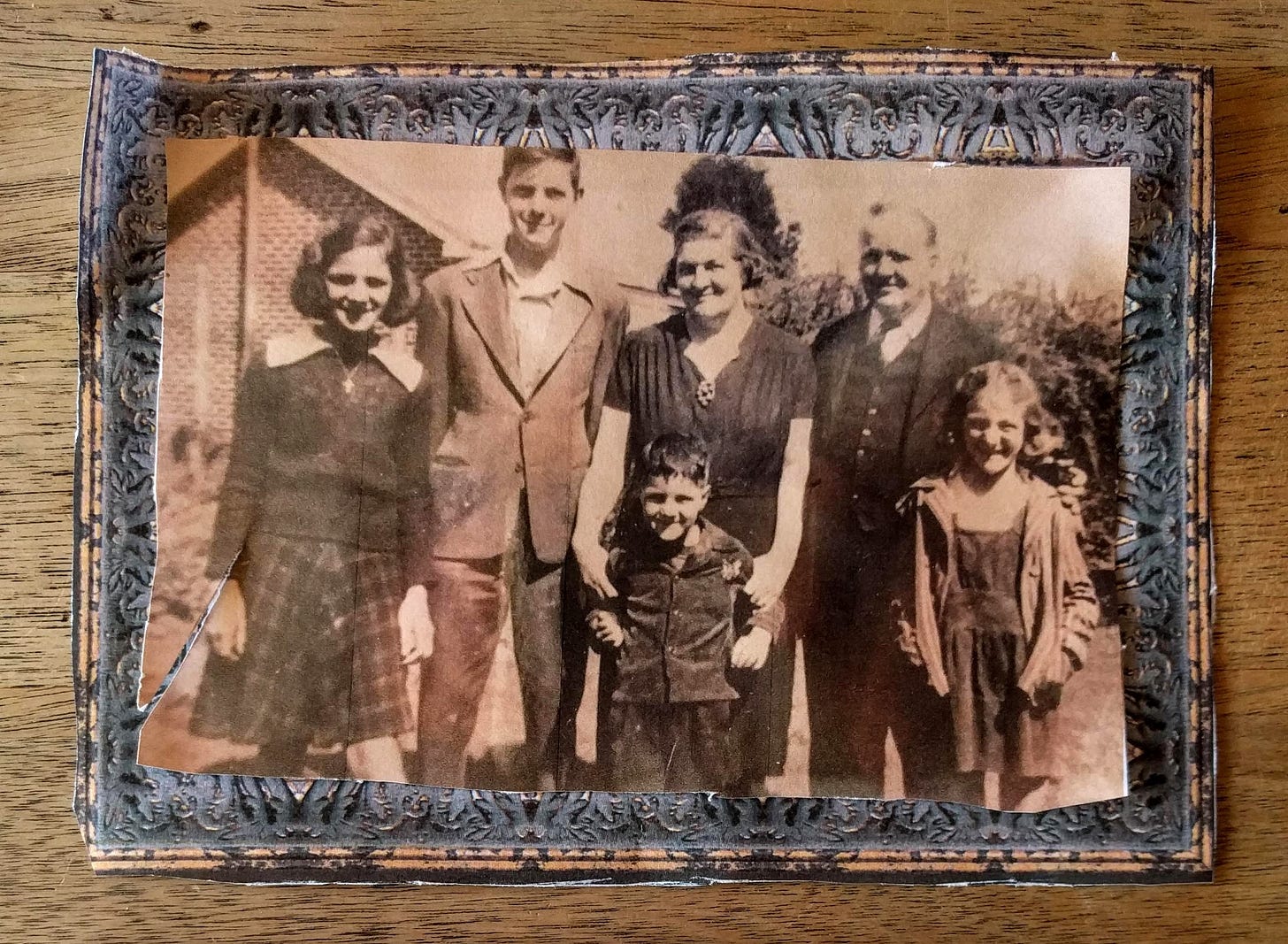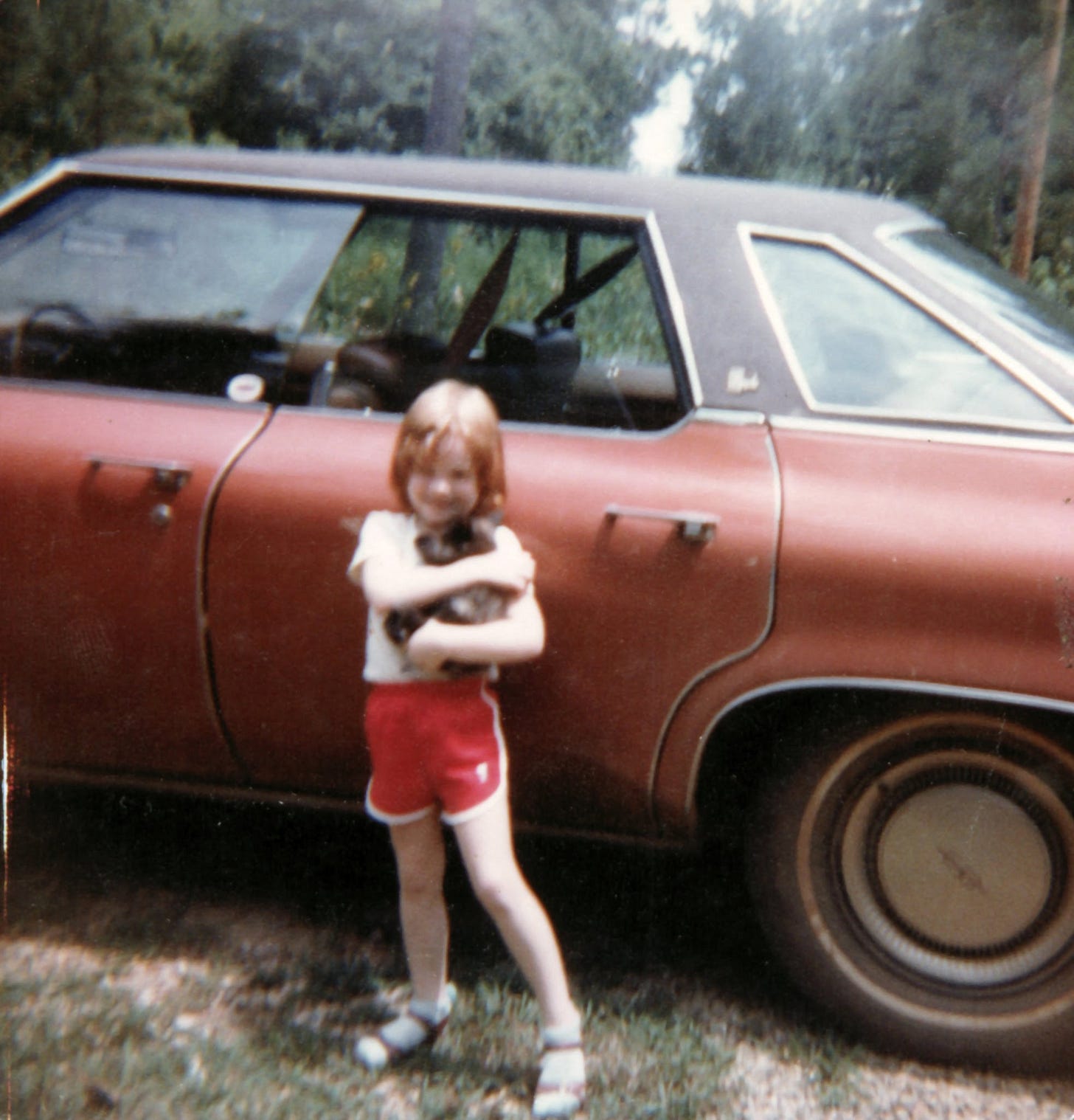I’ve been thinking about legacies—the lives a person may touch, either through what they experienced and shared or by what they leave behind. This idea comes up a lot for creators because, in some way, it’s how we’ve chosen to deal with mortality: by sharing something with the world that we can point to and say, “I was alive, and I did this.1”
One of my very favorite stories in the world is A Christmas Memory by Truman Capote, and maybe re-reading it recently is what set me off in thinking about people who, if not for the written word, may be lost to time—and unfairly so. Like Nanny Faulk (who is referred to only as “my friend” throughout the original version of the story), I have been incredibly lucky and have had a number of important people in my life, many of whom left marks on me that, like my freckles, may fade but will always be part of what I see when I look at myself.
So, I would like to try something new here: over time, posting a slow memorials series focused on people I have loved (and lost)—eulogizing them—kicked off with some of my memories of my great aunt Mary Florence, who we all called Pitty Pat. She never married nor had children, yet her legacy was secured through her good (and sometimes hilarious) deeds over the years.

Don’t let the smile-filled photo that follows fool you—the Foster household was a tough one, and asking either my Great Aunt Pitty Pat or my Grandpa Mustang about their early lives tended to result in them quietly staring off into space before changing the subject to something more cheery. As children during the 1930s, money and food instability weighed heavily on them all. From what I gathered, they farmed during The Great Depression, though it seemed their father was just as often involved in failed schemes as he was in actual farming; according to my dad, he wasn’t much of a charmer, particularly once their mother passed.

One story my grandpa (who we called Mustang) told me involved his father coming across another farmer who was trying to sell what he referred to as “bum watermelons” (in reality, honeydew melons) that he had somehow accidentally planted. He had a truckful of them he was attempting to sell at barebones pricing to minimize his perceived losses on the inferior product. Instead of telling the poor guy that he was much better off than he expected (as honeydew melons commanded a hefty premium over watermelons), my great-grandpa offered to buy the whole truckload off of him—which the poor original farmer considered awful good of him—and then my great-grandpa Foster proceeded to sell them at their true market value, pocketing the difference with great glee. I remember being horrified at the story and how unkind it had been not to help a fellow farmer out (esp. when all it would have taken was sharing a bit of knowledge), but Mustang remembered how lucky they had felt at the time for their dad to be able to turn the unexpected money into things the family desperately needed.
As so often is the case, though, the toughness of their early life did also hone some positive traits that served each of the young Fosters well later, including self-sufficiency and, it must be said, a certain lack of giving a damn what others thought. While it may go without saying, I will point out, anyhow, how extremely rare (especially in rural Georgia) it was for a woman to attend college at the time, so Pitty Pat's graduation from the Georgia State College for Women with a degree in education is both impressive and further evidence of her unusual drive and determination, despite what others might have thought. (I can also thank her teaching degree for getting my grandparents together, which is an extremely adorable “meet-cute” story for the next part of this series!)
As if getting her degree wasn’t enough, though, after earning it, Pitty Pat proceeded to teach locally and around the world—she was the first person I ever knew who had spent time in Paris, which she visited while teaching in Germany. Later, she taught in Libya (yes, Libya!) before returning to her home state of Georgia and building herself a cabin-like house in Crawford that she lived happily in for the rest of her life. She taught there, too, a variety of grades and students, including special education. Wherever she taught, she was known for plying her students with both sweets and very high expectations.

Pitty Pat signed me up for a subscription to Highlights Magazine, a subscription I cherished throughout my childhood. (Highlights gave me my first and second editorial passes—first for a poem and then for a drawing. 😂) In fact, she kept up the subscription for me until I was in high school, and my mom (perhaps embarrassed that I was still actually looking at it) suggested I write her about switching the subscription over to one of my younger brothers.
Pitty Pat also told me my first, and perhaps eeriest (at least to me), ghost story (which I will include in my next post), and when we found snake eggs one day during a childhood summer visit, she put them in a big jar on her screened-in back porch so we could watch them hatch. She grew lots of food in her productive, if not particularly pretty, garden, including her own peanuts, and she taught me how to leave the pulled-up plants (peanuts still clinging to the roots) in the sun to dry, as well as how to deal with invasive garden beetles since she was not a fan of chemical pesticides (spoiler: by crushing them—such a bummer, as their shells were beautifully iridescent). She was handy with an axe and kept one sticking out of a stump in her backyard for frequent firewood chopping needs.
Though she wasn’t one to blink before taking the head off of a water moccasin (a venomous snake that frequented the woodpiles near the creek) with a shovel or hoe, she was a sucker for homeless animals and took in the two stray kittens I found one day under the schoolhouse (she also let me name them, which I did, after two of my favorite students of hers: Melissa and Tommy). Under her keen eyes, Tommy and Melissa both ended up being extremely long-living cats who thoroughly enjoyed exploring the woods around her house, and she wrote me sad letters to inform me of each’s eventual passing, clearly (and very uncharacteristically) shaken up after each.
An excellent from-scratch baker, she made a killer chocolate cake that, to my delight, she even once mailed to me while I was in undergrad; I can conjure the taste of that chocolate frosting in my memory, even now! It surprised me not ONE BIT to see how many people were treated similarly, albeit with rum cake, when reading through the notes on her obituary. Really, all you have to know about her is what people wrote on her obituary wall. Seriously, read some of them—it is enough to give one faith in humanity.
She kept (and you will have to understand the strangeness now was not the case then) a loaded shotgun by the front door to her house, yet she gave whatever money she could to nearly any cause that asked—provided they didn’t go on too long about it. She trusted her own counsel and was very religious, but in a way that meant she prayed for people without having to tell them she was “praying for them” and gave gifts to those in tough times without making a big deal out of it—her business with her God was not anyone else’s, and she assumed others felt the same. In short, she was as loving as she was no-nonsense—and she was VERY no-nonsense.
She was the original Ron Swanson, and there will never be another like her.
Your “writing from memory” friend (who looks forward to sharing my two favorite Pitty Pat stories in the next post),
Elayne
My posts are always free, but my focus isn't; if you found this post interesting or useful, please consider ♡' ing it so I know. Thank you!
(Certainly, there are other ways, too. Not every legacy is so tangible, as anyone who has had an amazing teacher will know.)






This is such a fun project, Elayne! I love this. And your Great Aunt Pitty Pat seems like she was super cool and special!